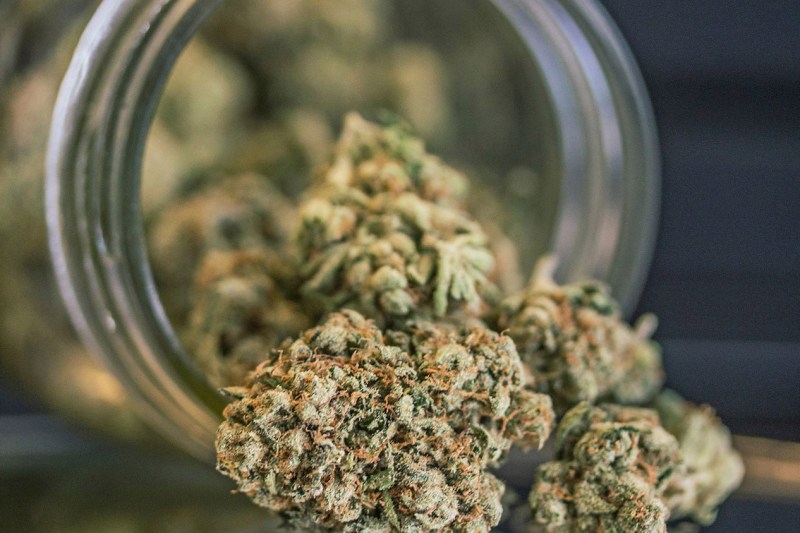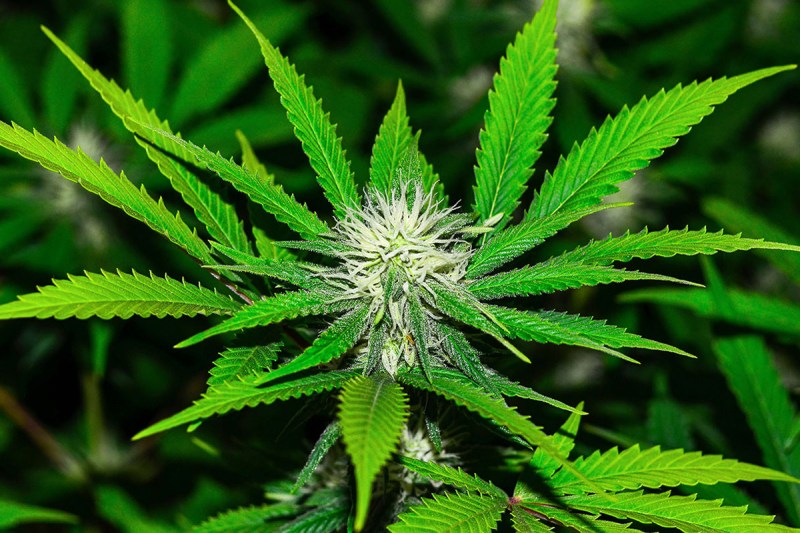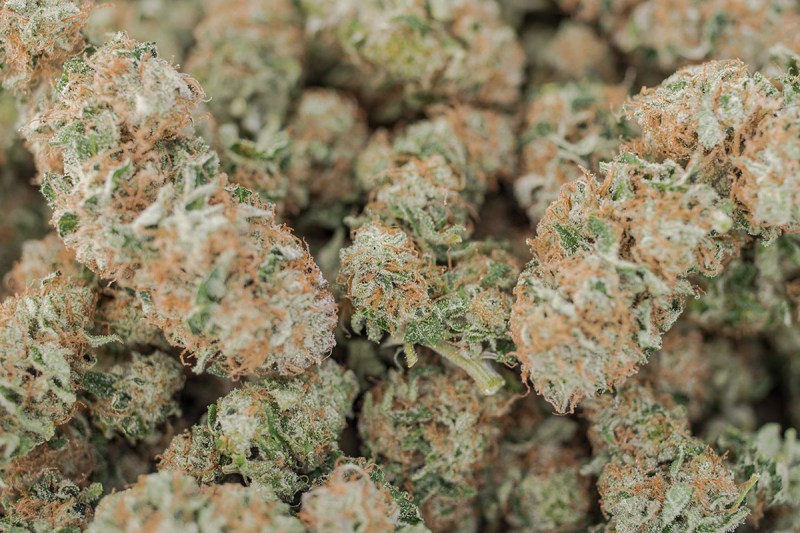
Gone are the days of taking the word of a guy sitting on an old loveseat, shrouded in a cloud of nag champa and blasting deep cuts from Desmond Dekker, about which marijuana strains are the best. Cannabis tastemaking has gone from an underground network based on word-of-mouth recommendation to an elite level of connoisseurship on a par with fine wine, coffee, and truffles. It has its very own Martha Stewart in cannabis cookbook author Laurie Wolf, along with a growing number of celebrity canna-chefs such as Chris Sayegh, whose cannabis-themed dinners go for $500 a head. It has a science-based certification program, offered by Colorado’s Trichome Institute, that turns stoners into sommeliers. It has a Yelp-like review site known as Weedmaps. It has a series of expos and competitions regional (e.g., the Dope Cup), national (the Cannabis World Congress and Business Expo) and global (the Cannabis Cup). Rolling Stone reports that estimates of the value of the legal marijuana market range as high as $110 billion.
If you’re not happy about all the elitism, go ahead and blame legalization and the commodification that inevitably comes with it. The fact remains that the growing cultural and even political acceptance of cannabis — both medicinal and recreational — is having a lot of benefits. The legalized marijuana industry populates local economies with a host of jobs, while the taxes associated with legal weed fund community development. Studies have connected legalization to a drop in overall crime, arrest rates, prosecution and imprisonment costs, and even opioid overdoses. It’s also compelling sellers to up their quality control, minimizing the number of buds tainted with fungus, bacteria, and other toxins that will really harsh your mellow.

In fact, legalization is just the latest step in a decades-long progression that has led to more flavorful, more potent, and more medically beneficial marijuana strains. The biggest shift in taste came in the 1990s when hydroponic technology made it possible for people to grow cannabis at home. With unlimited opportunity to tinker, hybridize, and, of course, sample the product, U.S. consumers started getting really particular about what they smoked.
That trend has only picked up steam in the years since. The mentality of today’s marijuana consumer is a far cry from the “smoke it if you got it” mindset of the 1970s.
The mentality of today’s marijuana consumer is a far cry from the “smoke it if you got it” mindset of the 1970s.
“Our customers are very snooty about their product,” says Meg Sanders of MiNDFUL, a state-of-the-art dispensary and growing facility in Denver, Colorado. “The growers here are phenomenal. We have really knocked it out of the park. And you have to. Because if you don’t, there’s somebody down the street that does.”
Ry Prichard, one of the country’s most influential marijuana critics, posits that the U.S. weed scene is quickly eclipsing even that of Amsterdam, long held to be the global acme of cannabis excellence. “In terms of quality and selection,” he says, “we blow Amsterdam away.” The Washington Post confirms his statement, reporting that the DEA has lately found evidence that the flow of illegal marijuana is starting to reverse, with some cases of U.S. marijuana being smuggled into Mexico. How’s that for irony?

So what makes one weed dank and another one skunky? It starts with terpenes, the little frosted hairs on the outside of the bud. Those frosty bits are organic compounds, unique to each strain, that give each variety of cannabis its distinctive smell and taste. Latest research reveals that those distinctive flavors are also accompanied by unique variations in therapeutic benefits as well as the “shape” of the high.
- Sativa: Strains believed to have more uplifting or energizing effects.
- Indica: Strains believed to have more relaxing or sedative effects.
- Hybrid: Strains with a mixture of both properties.
The other factor is where your weed is coming from. Your dealer or budtender can (and probably will) talk all day about the virtues of Gorilla Glue #4 versus Sour Diesel, but the reality is that anything he or she sells you is a variation on one of four main strains: haze, skunk, kush, and northern lights. In the 1980s, enterprising growers concentrated on hybridizing the fastest-growing, highest-yielding plants they could find. It takes a real cannasseur (yes, that’s a thing) to seek out the more nuanced seeds available on the world market. Phillip Hague, head grower at MiNDFUL, is one such cannasseur. Over the years, he has collected one of the most renowned seed banks in the country, featuring heirloom strains from Jamaica, Mexico, Pakistan, North Africa, and elsewhere.
Further Reading
- What is CBD? A Brief Intro to the Benefits of Cannabidiol
- High-Design Dispensaries Are Changing the Way We Buy Weed
- The Best Cannabis Cookbooks for Budding Chefs
At the end of the day, of course, your best options for marijuana largely depend on where you find yourself buying, and who you’re buying from. Whether you’re choosing among Ziploc baggies pulled from a bike messenger’s backpack (a la High Maintenance) or hashing out the finer points of cure times and trichome counts at a highfalutin dispensary, keep your senses keen for the best and most popular marijuana strains available today.
This list curates the most popular and top-selling strains around the country. But as any weed connoisseur will tell you, subjective taste will always rule the day when it comes to cannabis connoisseurship. Even super-critic Prichard confirms that trusting your instincts is the best way to choose your bud.
“It’s a body-chemistry thing,” he says. “If you go to a dispensary and you smell a bunch of jars, the one that smells the best to you is the one you should get.” He should know.
Best Sativa Strains
Super Silver Haze
One of the most award-winning strains ever created, this one is considered by many to be the perfect sativa. Citrus-pine flavors dominate, with some elegant eucalyptus notes here and there; the aroma brings in a hint of menthol. Pick this one for days when you’re cleaning the house or need a creative brainstorm — it offers sustained, buzzy energy but isn’t great for focus.
Jack Herer
Named for the legendary cannabis activist and author of the 1980s, Jack Herer is a fan favorite, both for its earthy pine and sweet citrus flavors, and its tendency to promote intense focus over long periods of time.
Best Indica Strains
Northern Lights
There’s a reason this indica is one of the world’s top four hybridized strains. Piney and earthy in aroma and taste, with just a hint of sweetness on the top, Northern Lights has the effect of cozying up to a crackling wood stove on a frosty night–it will leave you sleepy, smiling and warm inside.
The White
Named for the frosty color of its resin-heavy buds, the White is one of the strongest and most rare strains in existence. With a dominant pine flavor, notes of lemon and hash, and a hint of sweetness, this strain packs a punch, with as much as 20-29 percent THC. The White is said to be the total package, with unmatched flavor, potency, and beautiful looking buds. The only thing it doesn’t offer is yield, hence the strain’s rarity. If you find it, guard it with your life.
Looking to continue your search for cannabis knowledge? Here’s everything you need to know about CBD.
Best Hybrid Strains
Girl Scout Cookies
A true California classic, GSC (as it’s popularly known) is instantly recognizable by its sweet and spicy oven-baked smell — taste-wise, you might get some peppermint, some lemon zest, or a bread-like flavor. Regardless, it will leave you in a happy, contented mood. Aptly named, wouldn’t you say?
Oregon Grape
This rare clone is a powerful and potent combination of strains with an unforgettably sweet flavor that users swear tastes just like grape Kool-Aid. It delivers an instant warmth and relaxation, leading to its reputation as not only a mood enhancer but a muscle soother.
Article originally published September 4, 2018.


